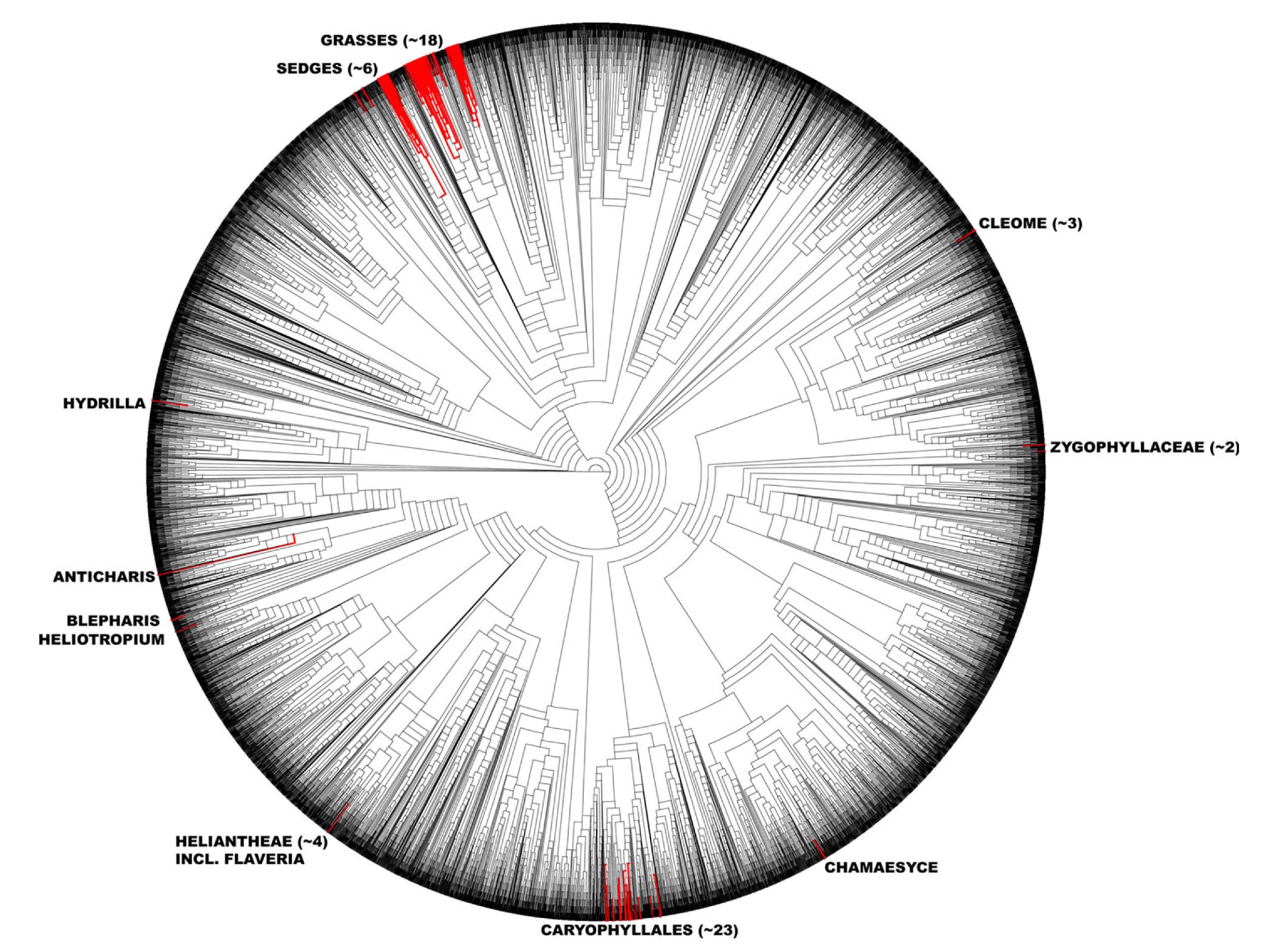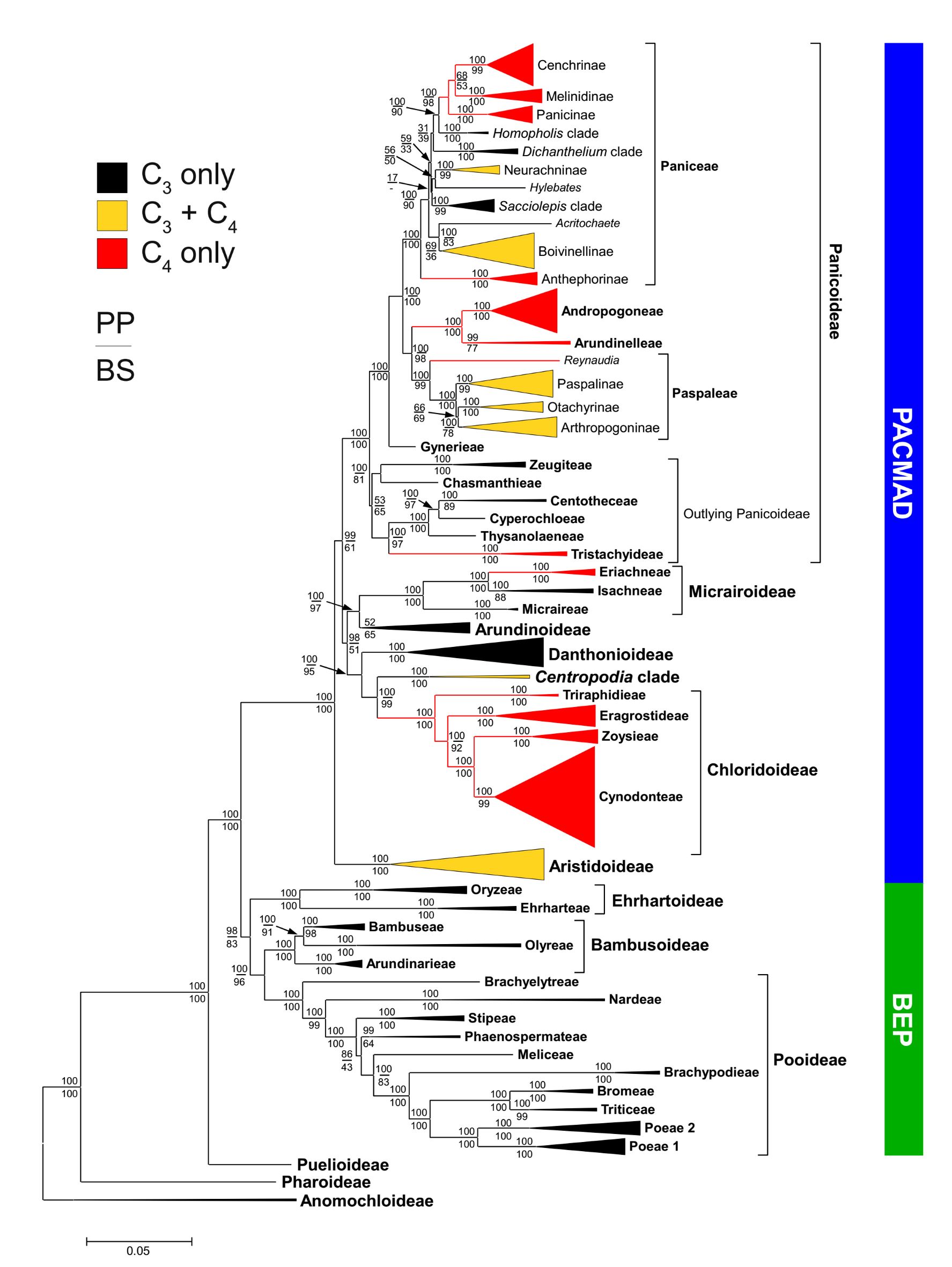

Why are the numerous independent origins of C4 not randomly distributed in the Angiosperm phylogeny? Instead, there exist clusters or "hotspots" of C4 evolution in the grass and sedge monocot families (Poaceae, Cyperaceae) and the eudicot order Caryophyllales, with only a handful of C4 lineages occurring outside of these clusters.16,17 Do these groups have some characteristics which predispose C4 evolution? The answer may lie in ancestral gene expression patterns or phenotypic characteristics, or in the presence or absence of certain gene regulatory networks. For example, without regulatory networks corresponding to strict mesophyll-specific and sheath-specific expression, the evolution of the most common Kranz-type C4 phenotype would be impossible. By sequencing species within these C4 hotspots and comparing them to species from clades lacking C4 taxa, especially those that occur in habitats that should favour C4 evolution, we aim to understand what it is about these three groups that facilitates C4 evolution. This will benefit C4 engineering efforts by shedding new light on the underlying requirements for C4 photosynthesis.
citations:
- Sage, R. F., Christin, P.-A. & Edwards, E. J. The C(4) plant lineages of planet Earth. J. Exp. Bot. 62, 3155–3169 (2011).
- Sage, R. F. A portrait of the C4 photosynthetic family on the 50th anniversary of its discovery: species number, evolutionary lineages, and Hall of Fame. J. Exp. Bot. 67, 4039–4056 (2016).